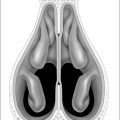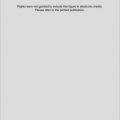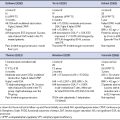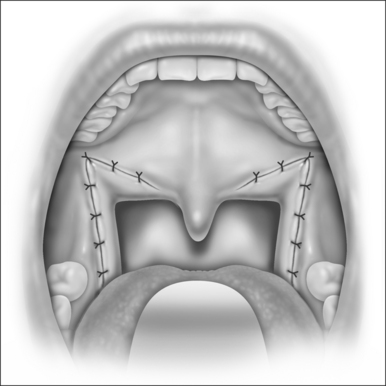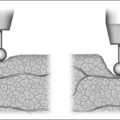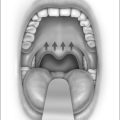Chapter 1 The role of the otolaryngologist in the treatment of snoring and obstructive sleep apnea
Sleep medicine is perhaps the youngest medical specialty recognized by the American Board of Medical Specialties (ABMS). The specialty has just recently been recognized and will offer its first qualifying board examinations in 2007. Prior to that time, the American Board of Sleep Medicine recognized itself and granted certification to its own members, but was never recognized as a medical specialty. People from medical and non-medical backgrounds interested in sleep medicine often took additional training and thus qualified to be certified in this field. Although the clinical and research people involved includes a large variety of different areas, the most common specialists have a background in pulmonary medicine or neurology. Otolaryngologists have played a distant role as consultants for the definitive treatment of sleep medicine.
Neurologists have training and expertise in interpretation of polysomnographic data, which overlaps with interpretation of electroencephalograms. Pulmonologists are experienced and trained in the use of continuous positive airway pressure (CPAP). Otolaryngologists are trained and have special expertise in the upper airway. For many years, otolaryngologists were not involved in the primary care of obstructive sleep apnea. We would often deal with obstructive sleep apnea/hypopnea syndrome (OSAHS) patients if they were specifically referred for surgery. Otolaryngology, however, is a specialty that deals with both surgical and non-surgical treatment of the upper airway. We have the expertise to obtain a proper history, to do a proper examination, and to assess dysfunction and disorders of the upper airway that no other specialist has. We, therefore, are the comprehensive treaters of such disorders as chronic rhinosinusitis and neoplasms of the upper airway. We do not wait for patients to be referred in for definitive treatment of these disorders.
Box 1.1 Symptoms associated with obstructive sleep apnea
| Adults |
Children |
| Heavy persistent snoring |
Snoring |
| Excessive daytime sleepiness |
Restless sleep |
| Apneas as observed by bed partner |
Sleepiness |
| Choking sensations while waking up |
Hyperactivity |
Gastroesophageal reflux
Reduced ability to concentrate |
Aggression and behavioral disturbance |
| Memory loss |
Frequent colds or coughing |
| Personality changes |
Odd sleeping positions |
| Mood swings |
|
| Night sweating |
|
| Nocturia |
|
| Dry mouth in the morning |
|
| Restless sleep |
|
| Morning headache |
|
| Impotence |
|
We screen our patients for symptoms and we always include a thorough examination of the upper airway that would alert us to abnormalities that require additional history or diagnostic testing when it comes to problems with chronic rhinosinusitis or upper airway neoplasms. When diagnostic testing is ordered, we control those tests and independently evaluate the results even when otherspecialists – such as radiologists – interpret the examinations. After the evaluation, we help guide the patient to select the proper treatment.
We should take this approach for patients with OSAHS. OSAHS is extremely common and often overlooked by both patients and physicians. We should screen every patient for both symptoms and physical findings suggestive of OSAHS. This should be part of a thorough routine upper airway examination. We should have enough basic understanding of polysomnography to determine if the testing that is done is adequate. We should be able to offer our patients both surgical and non-surgical treatment.
Many patients seen by sleep specialists are never informed of surgical options. They are told that CPAP therapy is their only option. Although CPAP therapy is clearly safer and more effective than any surgical therapy, there is a huge number of patients who cannot or will not use CPAP.
Sleep medicine is a dynamic and rapidly growing field in which opportunities for physicians of many backgrounds abound. The newly recognized status of the field and the establishment of a certification examination by the ABMS will accelerate the growth of the field and increase the importance of board certification of practitioners. The public will increasingly expect that physicians who provide comprehensive sleep medicine services will have ABMS Sleep Medicine board certification. The new ABMS examination, starting in 2007, will be co-sponsored by the American Board of Internal Medicine, the American Board of Psychiatry and Neurology, the American Board of Pediatrics, and the American Board of Otolaryngology.
There are three pathways that qualify physicians to sit for the new examination: (1) certification by one of the primary sponsoring boards and the current ABMS;(2) certification by one of the primary sponsoring boards and completion of training in a 1-year sleep medicine fellowship program, not overlapping with any other residency or fellowship; and (3) clinical practice experience: this clinical practice experience pathway consists of a 5-year ‘grandfathering’ period open to physicians who are board certified in one of the sponsoring specialty boards and who can attest that he or she has the equivalent of 1 year of clinical experience in sleep medicine during the prior 5 years. This experience could, for example, be gained by an individual practitioner who has devoted one-third of his or her practice to sleep medicine over 3 years, or by someone who spent 25% of their practice in the field over the past 4 years. Physicians in the clinical practice pathwaywould also have to attest to a specified minimum number of patients seen and polysomnograms and multiple sleep latency tests read. At the end of this initial 5-year period, the only route to board eligibility will be through an accredited fellowship training program. This creates a one-time, unprecedented opportunity for pulmonologists, neurologists, psychiatrists, and other physicians already working in the field to sit for the board examination.
While no one knows the number of ‘unboarded’ sleep medicine practitioners, we are confident there are a considerable number of otolaryngologists and other specialists who practice sleep medicine who could, with a little work, become board certified in the next 5 years. The necessary work might include strategic use of continuing medical education activities in sleep medicine, reading review articles and texts, reviewing cases with experts, and board review courses. We believe a larger number of boarded sleep medicine physicians will be good for the field and, additionally, good for patient care, and will help address future workforce issues in sleep medicine.
Whether we choose to be boarded in sleep medicine or not, we are clearly the upper airway experts and, as such, should take the primary responsibility for treating this disorder. We can certainly consult with sleep specialists during the care of our patients. We should, however, be involved in the diagnosis, testing, and treatment in all areas.
Sleep Apnea and Snoring Surgical and Non-Surgical Therapy

